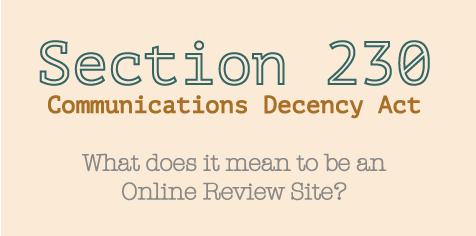INTRODUCTION
Created in 2005 to enable online file storing and sharing, MegaUpload was one of the most popular “digital storage lockers” of its time. The site allowed users to upload any content, including videos and music, and then generated links for users to easily view and share their uploaded content. At its peak, MegaUpload was the 13th most visited website on the Internet, with over 50 million page views per day and 180 million registered users (Tamlin). In 2012, though, the US Department of Justice shut down the website, alleging it illegally harbored and promoted the dissemination of copyrighted content. The shut down initiated what would become a controversial debate about online file sharing and offers us an interesting case study to examine how design impacts the perceived primary use and liability of a technology.
LEGAL ISSUES AT HAND
In the original January 2012 indictment, the DOJ brought several allegations against MegaUpload, including racketeering, conspiracy to commit copyright infringement, conspiracy to commit money laundering, and two counts of criminal copyright infringement.
Most relevant to this week’s course readings, the DOJ’s copyright infringement accused MegaUpload of using electronic means to “willfully, and for purposes of private financial gain, infringe copyrights” (Megavideo Indictment). This wording of this allegation indicates that the DOJ was accusing MegaUpload of offenses similar to those in 17 US Code 1201 that disallow the promotion of technologies that circumvent copyright protection services.
Furthermore, the inclusion of these two phrases “willfully” and “financial gain” indicate that the charges brought against MegaUpload would be classified as secondary copyright liability infringements as they do not directly violate copyright but knowingly promote it for financial gain. Awareness and motivation were essential considerations for the DOJ to address in order to demonstrate that MegaUpload ought to be regulated because they speak to the founders’ original intention for the site.
As this week’s reading have demonstrated, the “primary use” of technology determines its ability to be restricted. Under Sony vs Universal, a technology need only be capable of “substantial noninfringing uses” to avoid regulation. If a technology, however, is “primarily useful” for illicit purposes – as indicated in 18 US Code § 2512 – and lacks these “substantial noninfringing uses” it may be regulated under law.
Although the understanding of “primarily useful” may be debatable, the case of US vs The Spy Factory from this week’s readings persuasively supports that the phrase is clear enough to serve as the evaluation standard for MegaUpload and other technologies. The Spy Factory case also clarifies that “in evaluating an object’s ‘primary use,’ the Supreme Court has emphasized the objective determination of a device’s most probable use.” In other words, we ought to define the MegaUpload’s primary use as how most users would use the device rather how one user might use it.
Thus, in order to evaluate whether MegaUpload should be held accountable for encouraging copyright infringement, we would need to determine whether the site’s “primary use” was indeed to encourage illegal copyright infringement or whether the “substantial noninfringing uses” of the site outweighed that illegal use. To determine this “primary use,” we turn to MegaUpload’s design.
IMPACT OF PRIMARY USE DESIGN
17 US Code § 1201 clearly establishes that in assessing the “primary use” of a technology we should base our decision on what the device is “primarily designed or produced for the purpose of.” Design then can, indeed, be used as a principal measure of a technology’s “primary use.”
FTC v Frostwire demonstrated this design basis for “primary use” assessment by examining in particular the user interface design of a technology. Design, however, can be gleaned from additional design decisions, including information architecture and marketing choices. We turn to these design factors in analyzing MegaUpload’s “primary use.”
One of the bases of allegations against MegaUpload arises from its information architecture decisions on how the site stores its content:
In practice, the “vast majority” of users do not have any significant long term private storage capability. Continued storage is dependent upon regular downloads of the file occurring. Files that are infrequently accessed are rapidly removed in most cases, whereas popular downloaded files are retained. (items 7–8, MegaUpload Indictment)
As indicated by this allegation, MegaUpload designed its site to store files temporarily and placed higher importance on files with more downloads. While this architecture design could be seen as inconsequential, it clearly arises from MegaUpload’s desire to monetize its site. Because this financially motivated implementation is in line with storing copyrighted files that command high viewership and that frequently get removed due to takedown notices, it could be argued that storing illegal copyrighted material is one of MegaUpload’s primary intended uses.
Another clue to MegaUpload’s primary use can be found in its marketing design. As established in US vs The Spy Factory, how a company chooses to promote itself (eg choosing to call itself “The Spy Factory”) directly impacts its perceived primary use and liability. MegaUpload promoted itself as a tool for circumventing copyright:
§ They have “instructed individual users how to locate links to infringing content on the Mega Sites … [and] … have also shared with each other comments from Mega Site users demonstrating that they have used or are attempting to use the Mega Sites to get infringing copies of copyrighted content.” (item 13, MegaUpload Indictment)
By promoting or refusing to restrict this illegal use of its site, MegaUpload effectively embraced it and classified itself as a website with the intended use of sharing illegal copyrighted material.
MegaUpload also displayed a wide array of additional design decisions that can be found in the indictment to support the allegation of its “primary use.”
IMPLICATIONS
The allegations brought against MegaUpload have already had a significant impact on the liability concerns of other file-sharing sites. In light of the DOJ’s accusations against MegaUpload, several file-sharing sites including FileServe.com, FileJungle.com, Uploadstation.com, x7.to and 4shared.com have taken steps to limit their liability by limiting link sharing and banning third party downloads. Some sites, like Uploaded.to, Turbobit.net, BTJunkie, and QuickSilverScreen, have even gone so far as to block US IP addresses or shutting down entirely. It would seem then that DOJ’s copyright infringement regulation may be encouraging the creation of an “environment of tremendous fear and uncertainty for technological innovation” as alluded to in this week’s “Open Letter from Internet Engineers.”
Other sites, however, like the large MediaFire site seem undisturbed. As MediaFire CEO Derek Labian explains, he considered MegaUpload an extreme case of a business “built on copyright infringement” (Sean). In other words, the designed purpose of MegaUpload made it in particular appropriately subject to regulation rather than file-sharing companies at large.
The future of file-sharing sites is yet to be determined. What is clear though from the MegaUpload case study is that first and foremost, as website engineers and designers, I School students like us must be keenly aware of the design decisions we make. The small choices we make may make us liable for privacy or copyright violations.
On a more ethical level, we also must take an active role in determining ethical design standards to hold our professional community ethically accountable, as the “Open Letter” engineers did. Otherwise we will simply allow reactive governmental forces to heavy-handedly regulate our creative expression.
SOURCES
Tamlin, Bason. “DOJ Adds Wire Fraud, More Criminal Infringement Counts Against Megaupload.”http://www.bna.com/. Patent, Trademark & Copyright Law Daily, 22 Feb 2012. Web. 18 Mar 2014. <http://www.bna.com/doj-adds-wire-n12884907997/>.
Sean, Ludwig. “MediaFire CEO: Unlike Megaupload, our business model isn’t built on piracy.” VentureBeat. VentureBeat, 22 Jan 2012. Web. 18 Mar 2014. <http://venturebeat.com/2012/01/22/mediafire-megaupload-business-model-piracy/>.
MegaVideo Indictment. 16 February 2012. <http://www.washingtonpost.com/wp-srv/business/documents/megaupload-indictment.pdf>
by Becca Stanger, Tim Meyers


